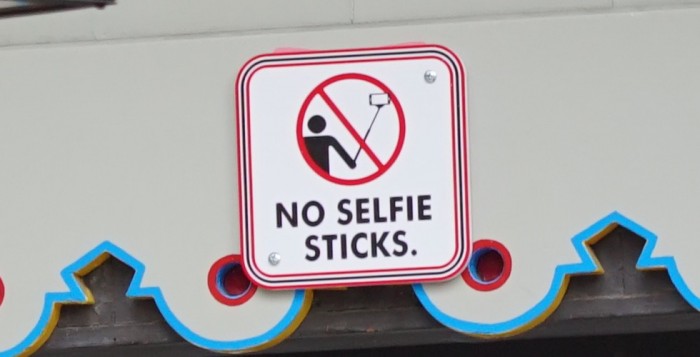This Is Why Your Arms Won't Get Torn Off On Disneyland Rides
You can't help it, everytime you're on a rollercoaster you stick your arms out and up even though there is a fear that they will somehow be torn off during an unexpected turn or drop in the ride. I know I feel this way everytime I ride Space Mountain at Disneyland. So how does Disney ensure that park guests never lose a limb on their attractions? The answer is something called the "Envelope of Protection". Learn what the Disney Envelope of Protection device is and see it in action, after the jump.
This story comes about after the recent news that Disney Parks would be banning Selfie Sticks. The dangers of guests waving around a 3-foot stick in a speeding vehicle full of passengers should be obvious, but Disney had to take a stance after a Disney California Adventure guest whipped out a selfie stick near the top of their fast rollercoaster Screamin.
This prompted a post on reddit's r/offbeat (found via LAist) by a user claiming to be a Disneyland employee castbmember. EnglishMobster revealed that Disney has ensured the safety of park guests on their attractions is a device/process called the "Envelope of Protection":
We have a thing called the "Envelope of Protection." Basically, all attractions made since 1965 are designed in such a way that the human body cannot reach out and touch anything — here's a vehicle they use to test this (that's from Walt Disney World in Florida, but California uses the same concepts). This means that when a rollercoaster is going 45 MPH, you can have your hands out and you won't get hit (it's not a good idea to test that, however — we do tell you to keep your hands and arms inside the vehicle at all times).
What does the "Envelope of Protection" look like? Here are a couple videos of it in action on the Seven Dwarf's Mine Train ride, a fairly recent edition to Disney World's Fantasyland:
I always assumed Disney and any amusement park had a test for this, but for some reason I just believed it was figured out in a computer simulation somewhere. It's weird seeing the cobbled together medieval-looking device in action.
Of course, a selfie stick effectively adds an extra three or four feet to your arm radius in any direction, which is why Disney banned the accessory from rides and then the parks. EnglishMobster explains the obvious risk presented:
When you're going 45 MPH, that can seriously damage the attraction and your phone/camera. The selfie stick will likely fly out of your hands and in a worst-case scenario can either hit someone else on the ride (injuring them) or land on the track and derail the sled behind you. One of our largest rollercoasters derailed because someone's backpack fell out once, and we don't want to risk a selfie stick causing the same issues.
The Disney Parks originally put signs up banning the use of selfie sticks on certain rides.
We originally tried banning them on rides where they could affect some show element or impact part of the ride — any ride with animatronics that could be poked, and any ride moving relatively fast through areas your selfie stick could hit. People still kept bringing them on the rides and kept dangling them out of the ride vehicles — and again, if your selfie stick hit something, it could endanger the safety of yourself and those around you. If we saw it come out, we had to stop the ride and ask you to put it away. Some rides can't restart very easily and can take a couple hours before they reopen — which, of course, is an inconvenience to other guests.
EnglishMobster also reassures us that Disney didn't make the ruling to protect photos of backstage areas, rightfully pointing out that guests have a lot of oppurtunities to see the backstage areas without the aid of selfie sticks.

